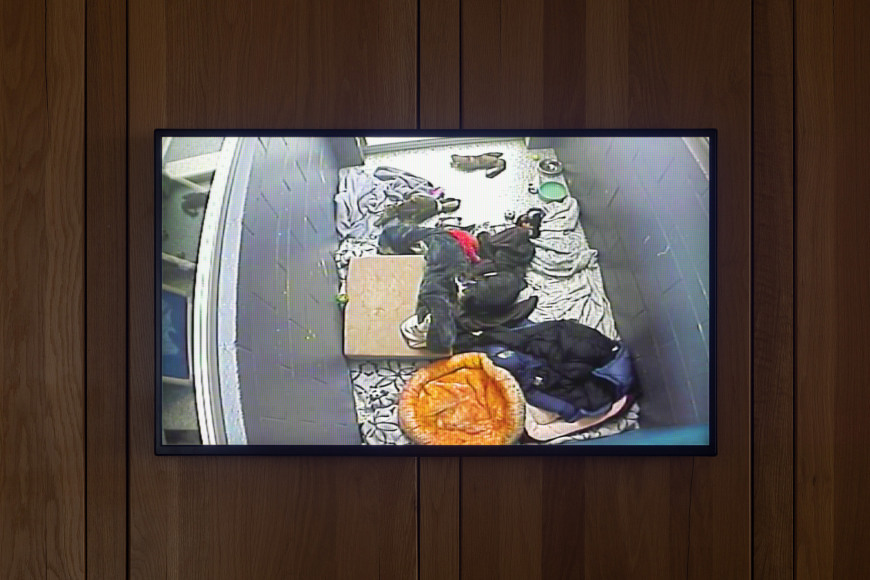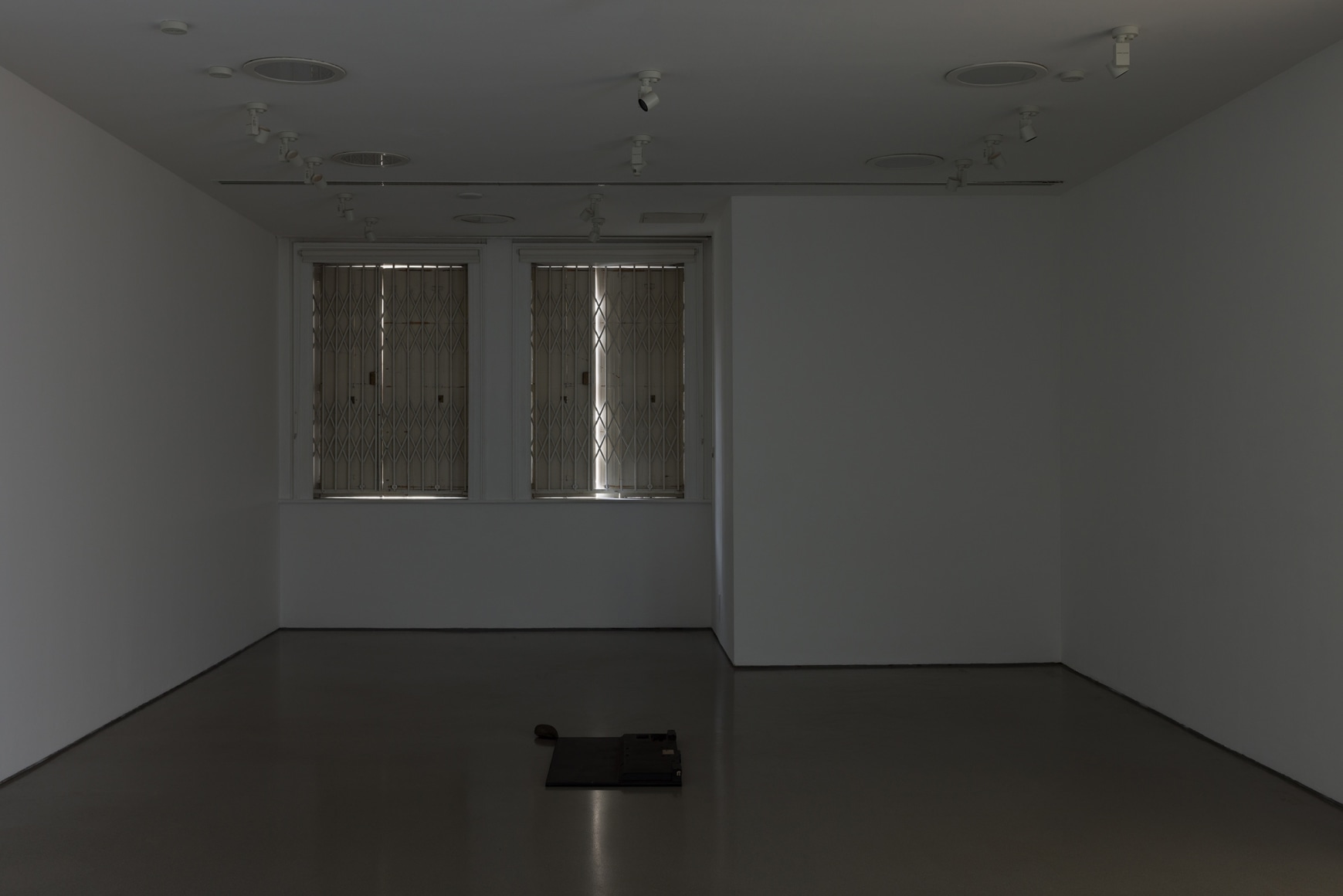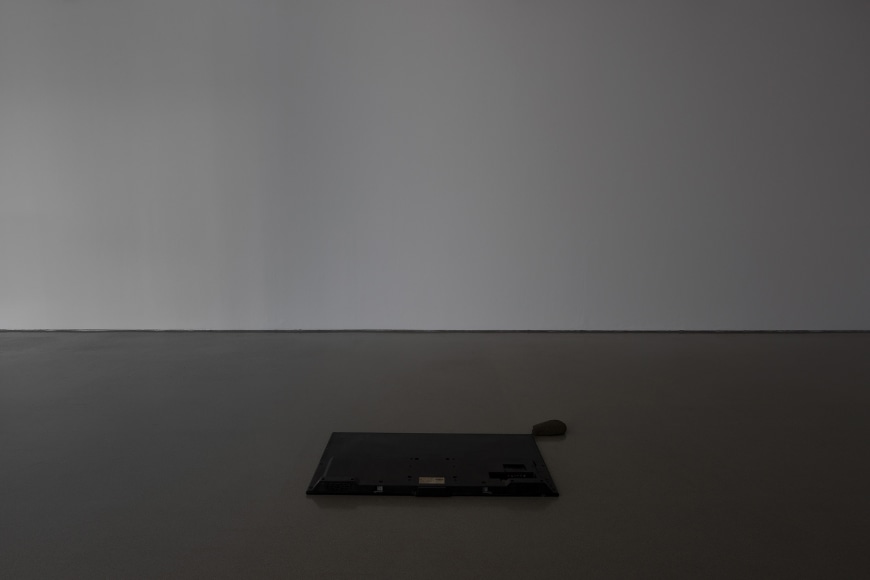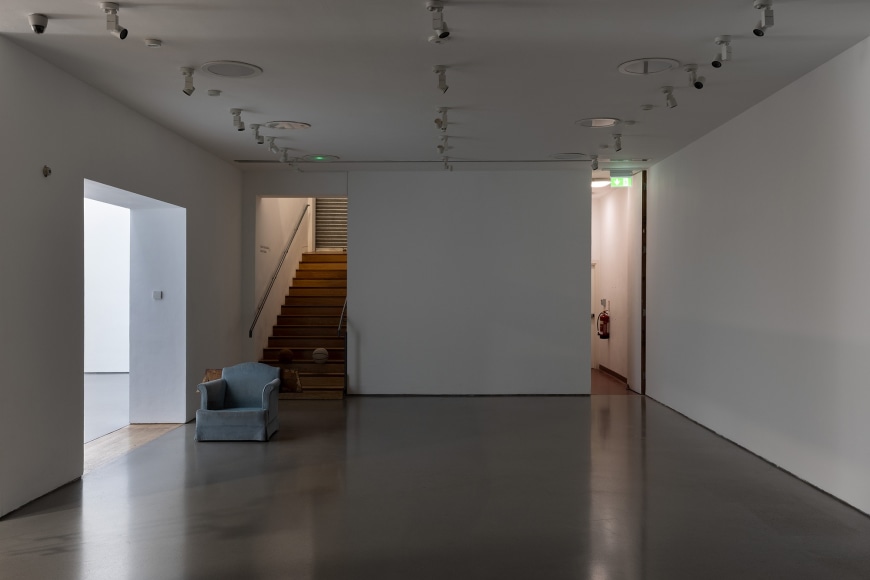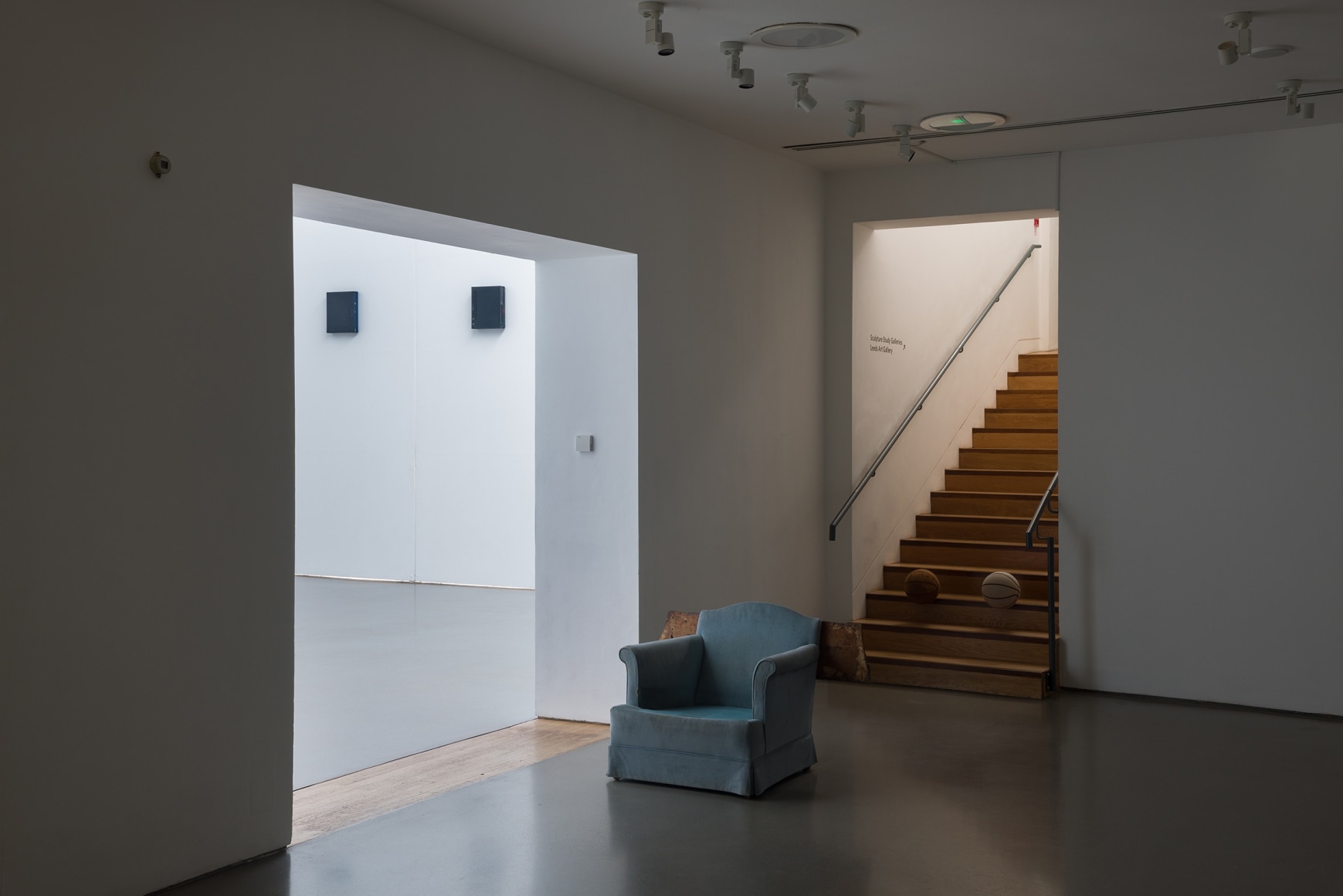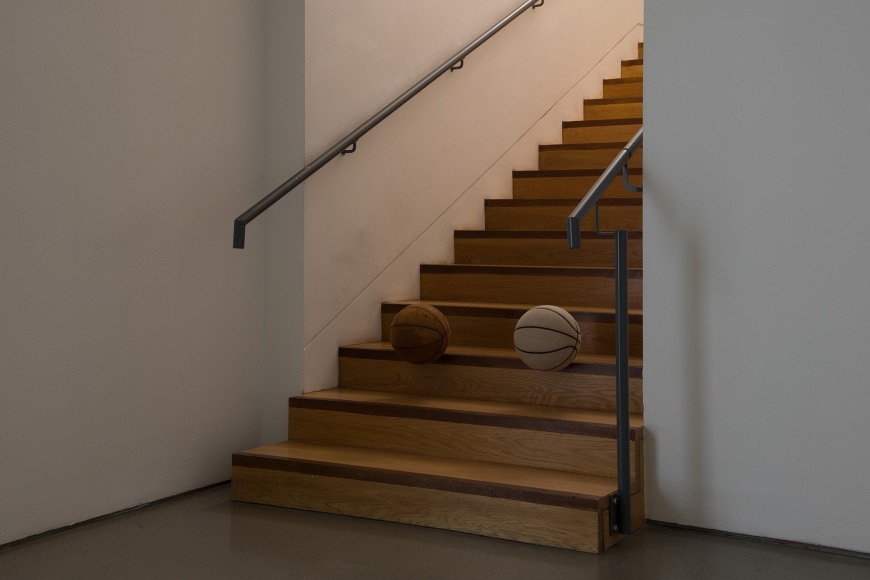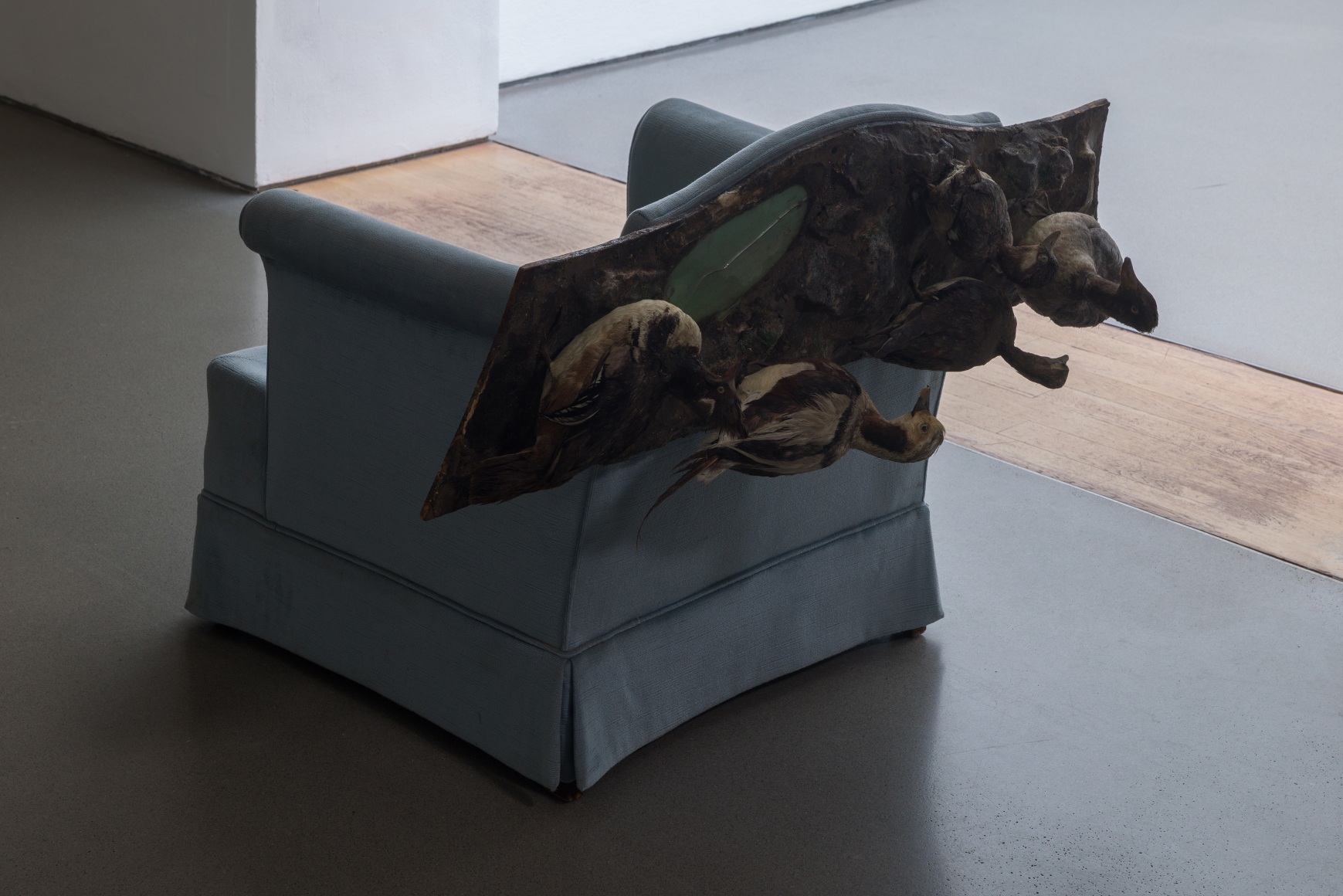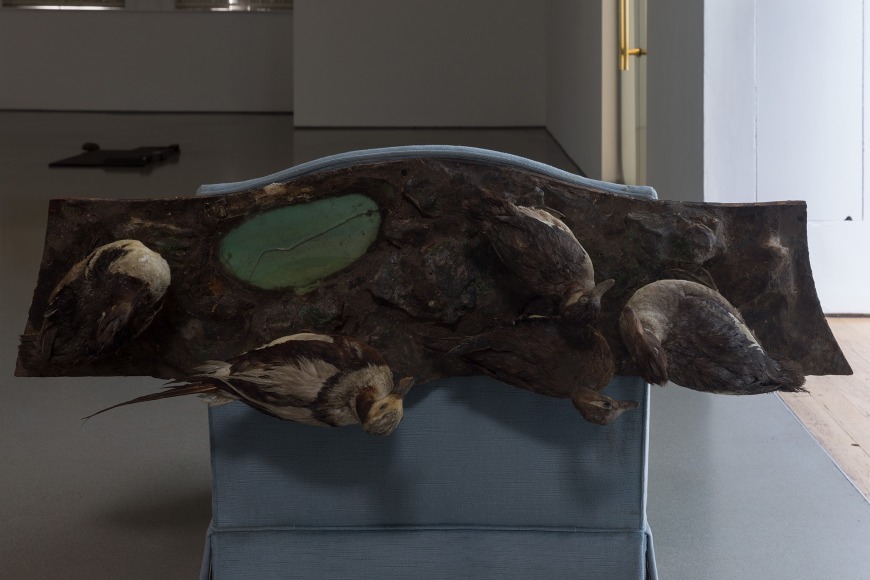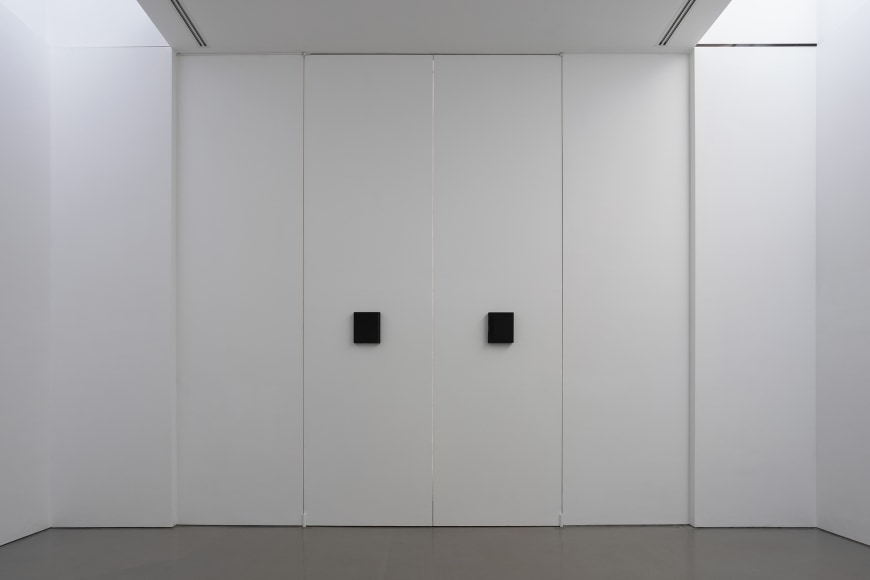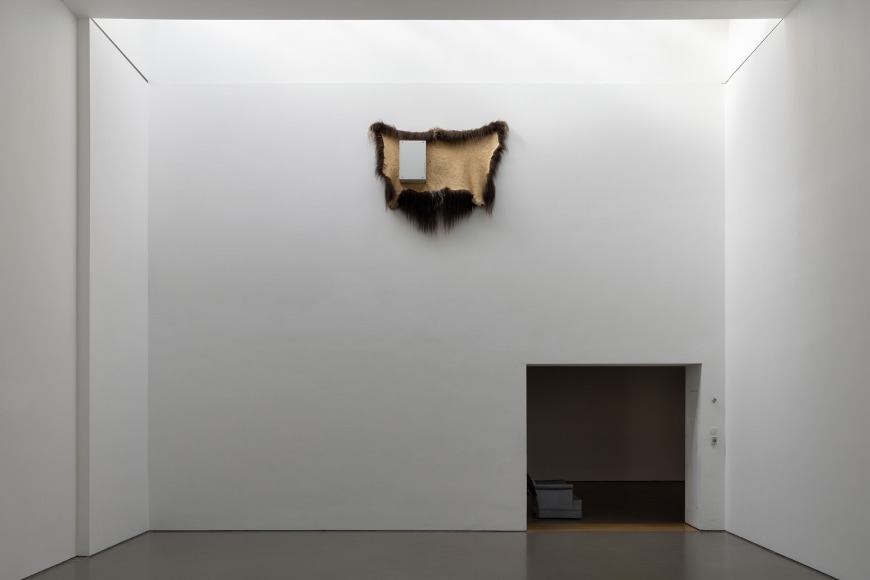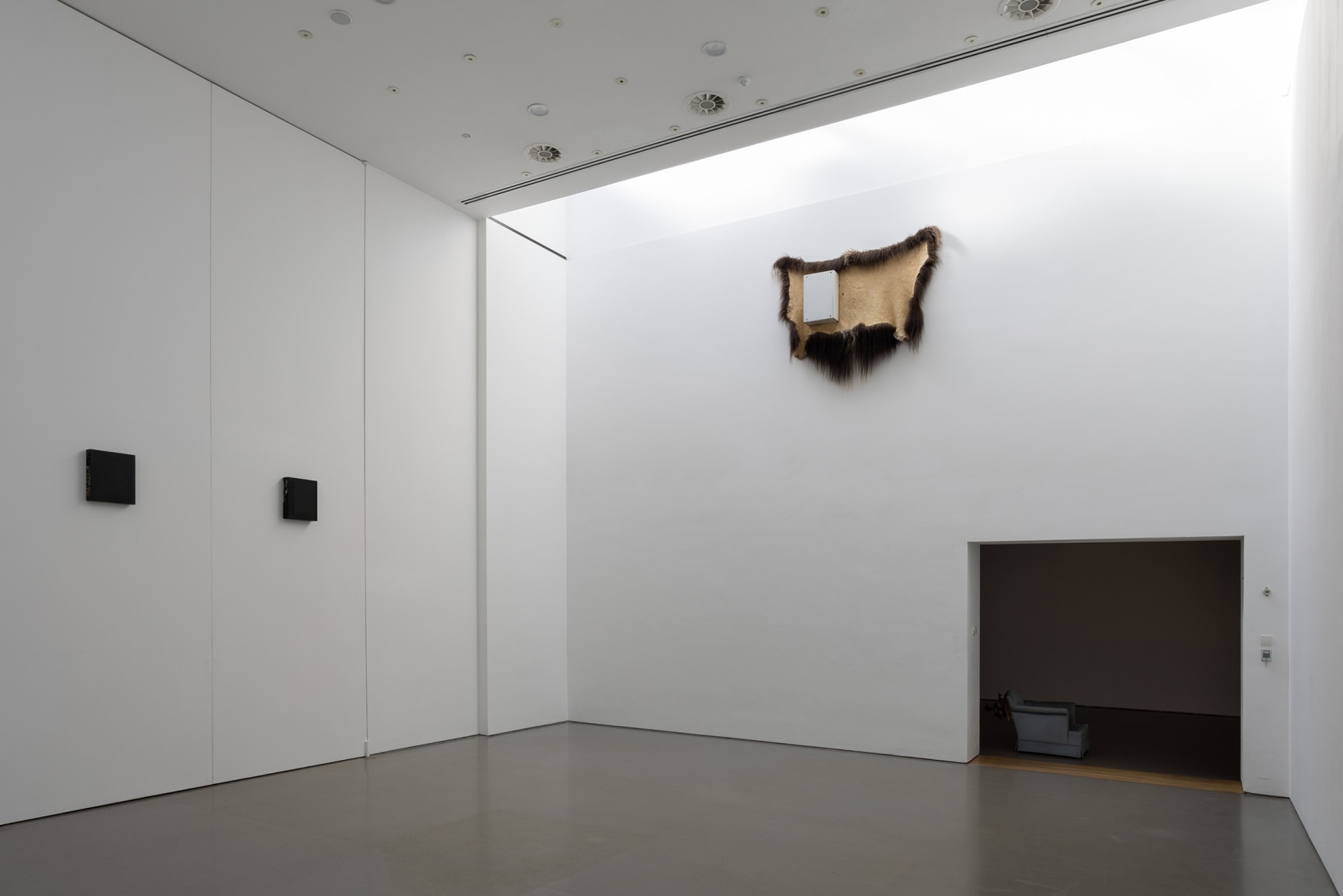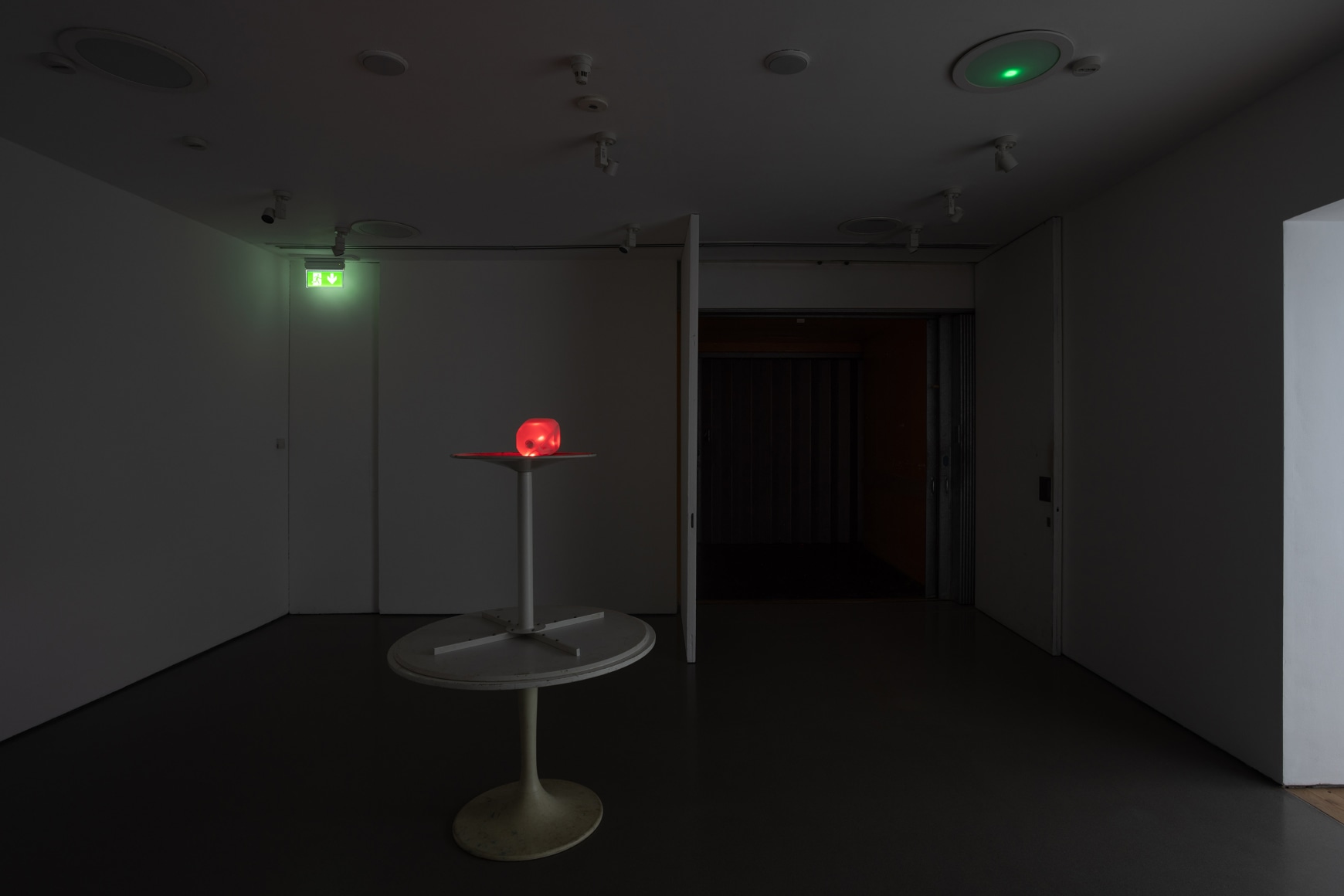Using found objects, Michael E. Smith’s materials are drawn from the global workflow of production-consumption-depletion. They are things that are thoroughly used, discarded, but won’t disappear. They are recognisable in their raw states, and remain so once absorbed into finished sculptures. Smith researches his chosen materials extensively, considering their histories alongside their physical properties: the perfect sphere of a basketball, for example, the hands that have touched it and the relationships between those who have caught it.
Before Smith arrived at the Institute the materials reached only an intermediary stage, or what he calls ‘sketches’. Once on site, he brought these together to make complete sculptures. Critical juxtapositions are made between different materials and another essential element — the gallery’s own environment. The fabric of the building is integral; its own traces of use, flaws, light, histories and systems become part of the sculpture. Removing signage, functional clutter (including exhibition labels, wall texts and even work titles) he has heightened the atmospheric register of the Institute and the experience of an exhibition.
Smith pares back his galleries to an extreme, often uncomfortably so. Emptiness has its place in art history, which Smith continues while asking what it means today. On one hand emptiness is order and harmony, on the other it is disarray and discord; for some it is a shelf in a luxury store, for others it is eviction. Cycles are important in his work (the life cycle of the materials he uses, the incorporation of the lighting or mechanics in a building that bring an equilibrium); so too are pairs (his sculptures are generally arranged as such). His attention to each brings an overarching human metaphor and a present, although never overwhelming, conversation with the fundamentals of life, relationships, death and decay.
(Source)

